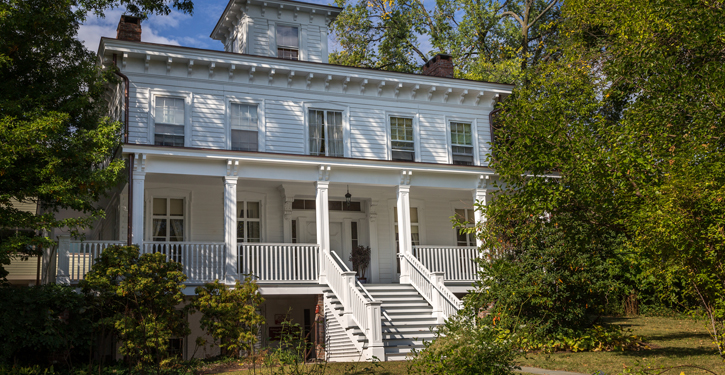The National Register of Historic Places recognizes nearly 100,000 historic properties, with nearly every county in the country boasting at least one site that’s listed with the National Register. Over 22% of homes in St. Augustine, Florida, are considered historic, and there are many historic homes for sale in cities like Chicago, Baltimore, and New Orleans.
To be considered historic, the home must be over 50 years old, have maintained an appearance that remains authentic to the time it was built, and exemplify architectural or engineering excellence from that era.
While some of these historic homes now serve as museums, many of these properties are still residential. Owning a historic home may mean tax breaks and low-interest loans, but there is a trade-off. Historic homes can be challenging to insure. A traditional homeowners policy often won’t work, so protecting a historic home can take a little extra work.
Maintaining a good foundation
In addition to the routine maintenance required to maintain a home, historic homeowners are required to preserve and protect the home’s integrity and heritage. In a practical sense, this means routinely inspecting the house and watching for common causes of deterioration.
If repairs or replacements are necessary, special considerations are necessary, as homeowners must prioritize the home’s authenticity. For example, they must avoid replacing windows with modern units and must maintain all historical characteristics.
However, the requirement to stay true to a home’s heritage has an exception: safety. Historic homes are not exempt from meeting safety and housing codes. Materials and features may have to be changed for a more modern alternative to keep a home safe.
Additionally, owners of historic homes are often allowed to modify their homes to make them more sustainable, such as installing insulation, updating furnaces, air sealing, and using vapor diffusion retarders.
Finding the right insurance policy
Owning a historic home can lead to tax breaks and low-interest loans, but those cost savings can be countered by more expensive insurance. Because the replacement cost value of a historic home is generally higher due to the expense of authentic materials to maintain a home’s heritage, insurance companies may charge higher premiums.
There are some ways that the owners of historic homes can improve their home insurance prospects. Guaranteed Replacement Loss Coverage can protect the full value of the house. This coverage will cover the home’s restoration (not just replacement). This means the homeowner would recover the full cost of rebuilding or restoring, regardless of the policy limit. While some insurance companies no longer offer this coverage and others have begun to cap the range at 115-125% of the policy limit, this type of policy is still available through some carriers.
All Risk coverage is an option that covers the dwelling itself and all contents. This coverage is more inclusive than a typical policy, but that may also mean additional costs for premiums. Homeowners can also consider raising their deductible, which can offset the higher premiums often associated with insuring older or historic homes.
Another option may be an HO-8 policy, which, unlike a typical HO-3, is designed to insure older homes and homes with a higher rebuild cost than their current market value. However, these policies generally only reimburse homeowners for the depreciated value of their property in the event of a loss, which can mean a significant gap between the amount invested and the amount recovered in a claim.
Consulting an insurance expert
Insuring an older or historic home can be a daunting task. Fortunately, homeowners don’t have to go it alone. An independent agent can offer advice and find the best options for the home.
At Westwood, we help homeowners find policies that suit their needs and protect what matters most in the event of a loss. If you own a historic home or are just looking for the right coverage for a more modern house, your Westwood agent is your best resource. Contact us today to get started.





